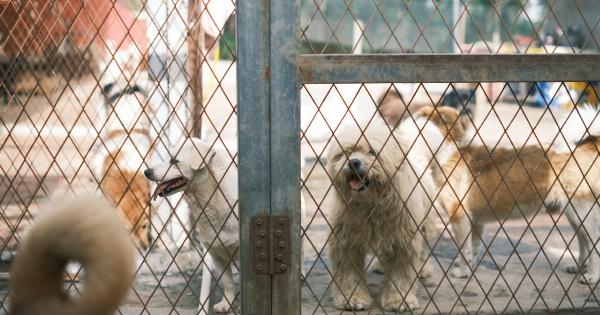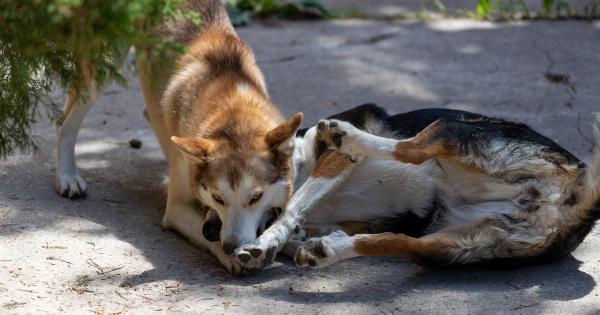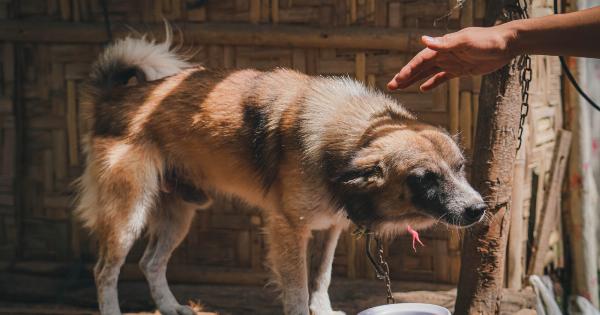As a dog owner or someone who frequently interacts with dogs, it is crucial to have an understanding of why dogs bite. Dog biting incidents can range from minor nips to severe attacks that result in serious injuries.
By delving into the science behind dog biting, we can shed light on the factors that contribute to this behavior and, ultimately, work towards prevention.
The Role of Genetics in Dog Biting
One significant factor that influences a dog’s propensity to bite is their genetic makeup. Certain breeds, such as Rottweilers and Pit Bulls, are known to have a higher tendency to bite due to their breeding history.
However, it is crucial to note that genetics alone do not determine whether a dog will become aggressive or bite; it merely sets the groundwork for potential behavior.
Environmental Factors and Dog Biting
While genetics lay the foundation, environmental factors play a vital role in shaping a dog’s behavior and, subsequently, their likelihood to bite.
Dogs that are exposed to violence, neglect, or abuse may develop fear-based aggressive behaviors, leading to biting. Similarly, inadequate socialization during a dog’s formative months can contribute to anxiety and aggression, thus increasing the chances of biting. Environmental factors can outweigh genetic predispositions when it comes to dog biting incidents.
The Influence of Fear and Stress on Dog Biting
Fear and stress are prominent triggers for dog biting. When a dog perceives a threat or feels cornered, their fight-or-flight response kicks in.
If escape is not an option, the natural response may be to resort to defensive biting as a last-ditch effort for self-preservation. It is important to recognize and respect a dog’s personal space, especially when they exhibit signs of fear or stress, to mitigate the risk of a biting incident.
The Significance of Body Language in Dog Biting Prevention
Understanding a dog’s body language is crucial in preventing biting incidents. Dogs often communicate their discomfort or unease through subtle cues that can be misinterpreted or overlooked by humans.
Signs such as a tense body, a stiff tail, raised hackles, or bared teeth indicate that a dog is feeling threatened and may resort to biting if the situation escalates. By being attentive to a dog’s body language and responding appropriately, potential biting incidents can be averted.
Protective Behavior and Maternal Instinct
Dogs, especially females with puppies, display protective behavior that can lead to biting. This instinctive response aims to safeguard their young or defend their territory when they perceive a threat.
Approaching a mother dog and her puppies without caution or provoking their protective behavior can quickly escalate into a biting incident. It is crucial to respect a mother dog’s boundaries and give her the space and security she needs to nurture her young without feeling the need to bite.
Social Hierarchy and Dominance-Related Biting
Dog biting can also stem from dominance-related issues within a social hierarchy. Dogs are pack animals by nature and adhere to a hierarchical structure.
In certain situations, a dog may feel compelled to bite to assert their dominance or protect their status within the pack. This biting behavior is often seen when dogs are challenged by unfamiliar dogs or when there is a perceived threat to their role within the social group.
Understanding and appropriately managing dominance-related biting requires a skilled and knowledgeable approach.
Territorial Aggression and Biting
Many dogs exhibit territorial aggression, which involves protecting their perceived territory from intruders or perceived threats. This can be their home, yard, or any area they consider their own.
When a dog feels their territory or personal space is being encroached upon, they may resort to barking, growling, and, ultimately, biting. Proper training and establishing clear boundaries can help prevent territorial aggression and minimize the chances of biting incidents.
The Role of Pain and Medical Conditions in Dog Biting
Dogs in pain or suffering from certain medical conditions may bite as a defensive mechanism. When a dog is in discomfort, they may lash out if approached or touched in a way that exacerbates their pain.
It is vital to be aware of any signs of pain or underlying medical conditions in dogs, particularly if they exhibit sudden changes in behavior or display uncharacteristic aggression. Addressing their pain or medical needs can eliminate the risk of biting incidents.
The Influence of Training and Socialization on Dog Biting
A well-trained and properly socialized dog is less likely to resort to biting. Early socialization, exposing a dog to various environments, people, and other animals, helps them develop a positive outlook and reduces fear and anxiety.
Effective training techniques that focus on positive reinforcement and establishing clear boundaries can prevent aggressive behavior and biting. Investing time and effort in training and socialization lays the groundwork for a well-behaved and non-aggressive dog.
Preventing Dog Biting Incidents
Preventing dog biting incidents requires a multi-faceted approach that combines understanding, responsible ownership, and effective training.
By considering the factors discussed above and seeking professional guidance when necessary, it is possible to minimize the risk of dog biting and create a safe environment for both humans and dogs.
The Collaboration Between Owners, Professionals, and Communities
Reducing the occurrence of dog bites necessitates collaboration between dog owners, professionals, and communities.
Responsible dog ownership, including regular vet visits, proper training, and appropriate socialization, is the foundation for a well-behaved and non-aggressive dog. Professionals such as veterinarians, dog trainers, and behaviorists play a crucial role in educating owners, assessing dog behavior, and providing effective interventions.
Communities can contribute by promoting responsible ownership practices, organizing educational events, and establishing clear regulations to prevent dog biting incidents.
Conclusion
Understanding the science behind dog biting is instrumental in preventing potential incidents and creating a safer environment for everyone.
While genetics and breed play a role in a dog’s propensity to bite, environmental factors, fear, stress, protective instincts, social dynamics, and medical conditions can significantly influence their behavior. Responsible dog ownership, appropriate training and socialization, and collaboration among owners, professionals, and communities are key to reducing dog biting incidents and fostering a harmonious relationship between humans and dogs.































